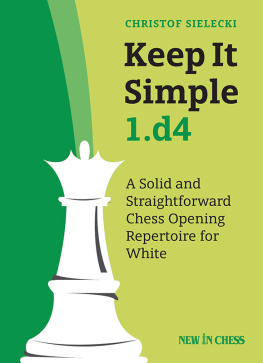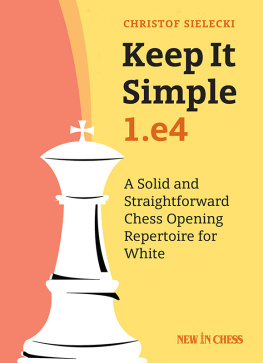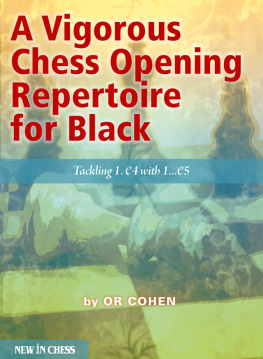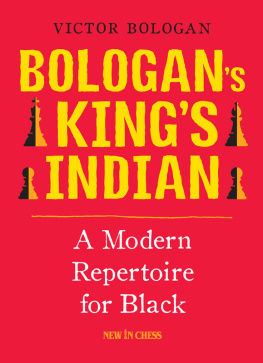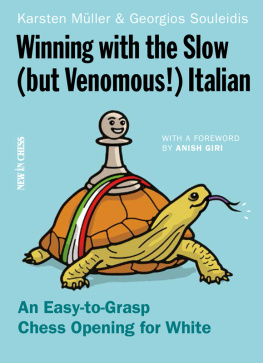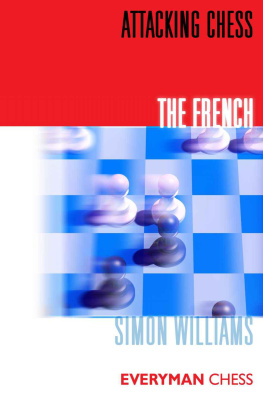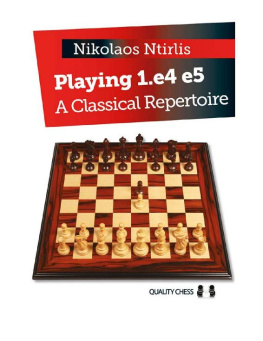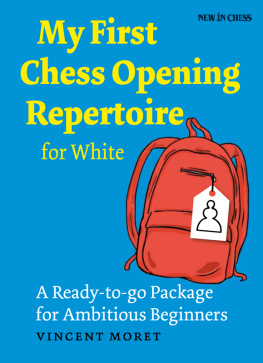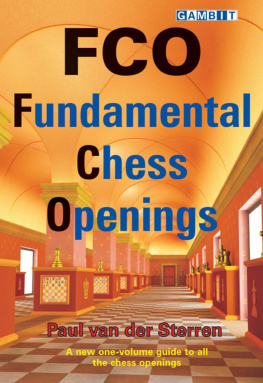Keep It Simple: 1.d4
Christof Sielecki
Keep It Simple: 1.d4
A Solid and Straightforward Chess Opening Repertoire for White
New In Chess 2019
2019 New In Chess
Published by New In Chess, Alkmaar, The Netherlands
www.newinchess.com
All rights reserved. No part of this book may be reproduced, stored in a retrieval system or transmitted in any form or by any means, electronic, mechanical, photocopying, recording or otherwise, without the prior written permission from the publisher.
Cover design: Volken Beck
Supervision: Peter Boel
Editing and typesetting: Frank Erwich
Proofreading: Joe Petrolito, Dennis Keetman
Production: Anton Schermer
Have you found any errors in this book?
Please send your remarks to and implement them in a possible next edition.
ISBN: 978-90-5691-867-5
Contents
Explanation of symbols
The chessboard
with its coordinates:

King |
Queen |
Rook |
Bishop |
Knight |

| White stands slightly better |

| Black stands slightly better |

| White stands better |

| Black stands better |
+ | White has a decisive advantage |
+ | Black has a decisive advantage |
= | balanced position |
! | good move |
!! | excellent move |
? | bad move |
?? | blunder |
!? | interesting move |
?! | dubious move |
Preface
Welcome to Keep it Simple: 1.d4 !
Keep it Simple: 1.e4 was released in 2018. Right after the release, people asked me if a similar book for 1.d4 was a future project, and here it is! This book outlines a complete repertoire for White based on 1.d4.
Before we discuss some points of the repertoire, Id like to explain the Keep It Simple approach. Most opening books nowadays have reached enormous complexity, often comprising of several volumes, totalling 1000+ pages. This depth of analysis is useful for very strong players, but not so much for amateur players. I felt that it must be possible to Keep It Simple instead, being more practical than scientific in the choices. White does not get an advantage anyway against the main line defencesfor example the drawing percentage in top level correspondence chess speaks for itself.
My main KIS guidelines are:
The chosen lines are simple to learn;
It must be possible to find your way if you forget your lines;
Choose lines that may not be most critical, but uncomfortable for the opponent.
Compiling the repertoire according to these guidelines has led to a very classical, sound and reliable repertoire. You will get good endgames frequently, or positions with long-term assets like the bishop pair. You wont get unsound gambits or tricky lines that can be refuted all lines are playable up to a very high level. In fact, most of the repertoire has been played by top players, at least occasionally or in quicker time controls.
The lines chosen share many common themes and ideas and are therefore easy to learn as a whole. You will see many concepts multiple times, which makes it easier to learn them. The repertoire also includes many new dangerous ideas that will surprise your opponents early on.
Id like to address one point about the term Simple. There are some lines in the book that are not simple in the sense that there is no complexity in the play. Sometimes the only way to pose problems is to enter complex play, and it is part of chess improvement to accept challenges at least in some lines. It is important to emphasize that our repertoire choices will often get opponents out of their mainstream theoretical knowledge and therefore we enter more complex situations with a head start, being on our home turf.
Compared to Keep It Simple: 1.e4, I made one change in the structure of the book. The 1.e4 version included 30 complete games to showcase typical middlegame ideas and plans. For the 1.d4-version, I decided instead to continue many lines deeper than it would be strictly necessary for opening study purposes only. This deeper look gives you the necessary insight on how to proceed after the initial opening moves. There are some variations easily going beyond move 20. This does not mean that you need to learn all these moves by heart, but having seen the key ideas unfold after the first moves is valuable and will add to your arsenal of middlegame plans. I also decided to cover some sidelines in more detail, when I felt that the play is particularly instructive in them.
The final important point I need to mention is that Keep It Simple: 1.d4 was developed first as an online, interactive book on the platform www.chessable.com. On the website, you can learn the moves based on text and videos. This product was released in June 2019. The book you are now reading has the same content, only adjusted to fit the format better. Based on the feedback of Chessable users, I have added some lines that were played right after the release or that I simply forgot initially having hundreds of readers before the book goes in print is excellent quality assurance!
So just one more thing. Always remember: Keep It Simple for you, make it difficult for your opponents!
Christof Sielecki
Dinslaken, Germany
October 2019
Building a 1.d4 repertoire
Whats the main difference between building an opening repertoire based on 1.e4 and one based on 1.d4 ?
There are mostly two key points. The first one is the topic of move orders. In a repertoire starting with 1.d4, move orders and transpositions are of paramount importance, while these concepts are less dominant in 1.e4-based repertoires. I guess it is best to explain this point with an example. If you start with 1.e4, right after Blacks reply on move one, you most of the time know what opening you will play. If they choose 1c5, it is a Sicilian and it wont transpose to a Caro-Kann any more. If they play 1e5, you know that you wont play a French Defence. This also means that your options against Blacks defences have very little dependence on one another. For example: you dislike your choice against the French and want to change your lines. This has no relevance for the rest of your repertoire, as there are no or very few connections between your lines.
Now, compare this to the 1.d4 universe. After 1.d4, Black might play the immensely popular flexible move 1f6. Now, contrary to, for example, 1.e4 e6, you dont know yet what opening you are going to play. Black might intend to play g7-g6 next, or e7-e6, or even d7-d5, which he could have done already on move one. He might intend to play the moves e7-e6, d7-d5 and f6, but he has various move orders to do so. Starting with 1d5, 1e6 or 1f6 is all possible and perfectly sound. Your move selection early on, even on move two, is relevant for many different openings that may arise. Every choice needs to fit, making sure that you get your lines and that you are not being tricked into something you did not want to play in the first place. Of course, this works both ways: choosing your move orders correctly might lead your opponent into unknown territory, giving you an advantage.
Next page
